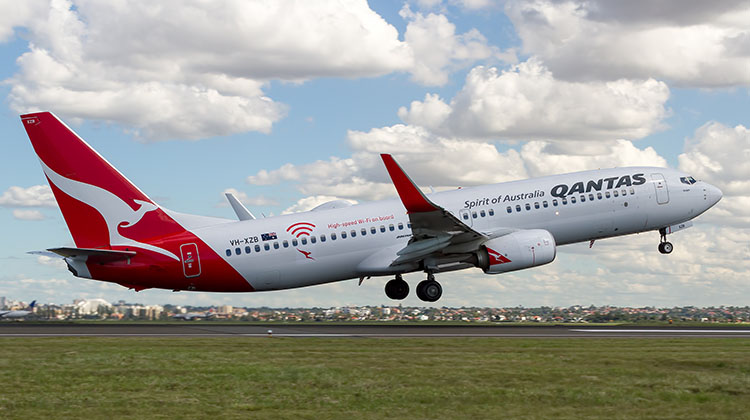
Qantas anticipates reporting a fall in underlying profit of up to 11 per cent for the full 2016/17 financial year as competition on international routes and weakness in the resources sector pressure revenues.
The airline group said in a trading update on Thursday that underlying profit before tax (PBT) for the 12 months to June 30 2017 was expected to come in between $1.35 billion and $1.40 billion.
“This reflects improving performance from Group Domestic and Qantas Loyalty partially offsetting a relatively weaker, but resilient, Group International performance in a highly competitive market,” Qantas said in the trading update.
The 2016/17 figure would be between 8.5 per cent and 11 per cent lower than underlying PBT of $1.53 billion achieved in 2015/16, which was the highest result in the company’s history. Underlying PBT excludes one-off items and the airline regards it as the best indication of financial performance.
Qantas chief executive Alan Joyce said the full year guidance, if realised, would represent the second best result in the company’s history.
“It shows we’re able to keep performing in a mixed global environment,” Joyce said in a statement.
Joyce said while conditions were “still tough” in the international market, given capacity growth was helping keep fares low, they had eased slightly in recent times.
“Because of the work we’ve done to transform Qantas and expand into growth markets, our international businesses are navigating the headwinds better than our key competitors,” Joyce said.
The airline group reported unit revenues across its combined Qantas and Jetstar domestic operations rose 4.6 per cent in the three months to March 31 2017, as both carriers reduced capacity by a combined 3.7 per cent.
The reduction was particularly acute on resources-related routes, where capacity was reduced by 19 per cent.
The airline group has been redeploying aircraft out of domestic resources-related markets onto more profitable routes that have primarily been in international markets, as well as getting more out of the fleet through increased utilisation.
Meanwhile, on the international front, Qantas noted capacity growth from foreign carriers had moderated to about five per cent in the fourth quarter of 2016/17.
This would help address the decline in unit revenues, which fell 5.6 per cent in the third quarter.
Although Qantas’s international capacity grew 4.8 per cent, the airline noted the increase was due to previously announced routes to Asia, such as the return to the Sydney-Beijing route and the transition of Melbourne-Tokyo Narita from Jetstar to Qantas.
Qantas has also added extra flights to New Zealand and scheduled some additional frequencies to its existing Asian network.
“As expected, the tough conditions in the international market eased slightly with the downward trend in group international unit revenue moderating as capacity growth in the broader market slowed,” Qantas said.
Revenue across the airline group fell 1.4 per cent to $3.96 billion, compared with $4.01 billion in the prior corresponding period.
In August 2016, Qantas said it would start issuing quarterly trading updates in place of the previous monthly traffic statistics to enhance market disclosure.
Virgin Australia, which began issuing quarterly updates some years ago in line with one of its major shareholders Singapore Airlines (SIA), is expected to publish its first quarter trading update later in May.










